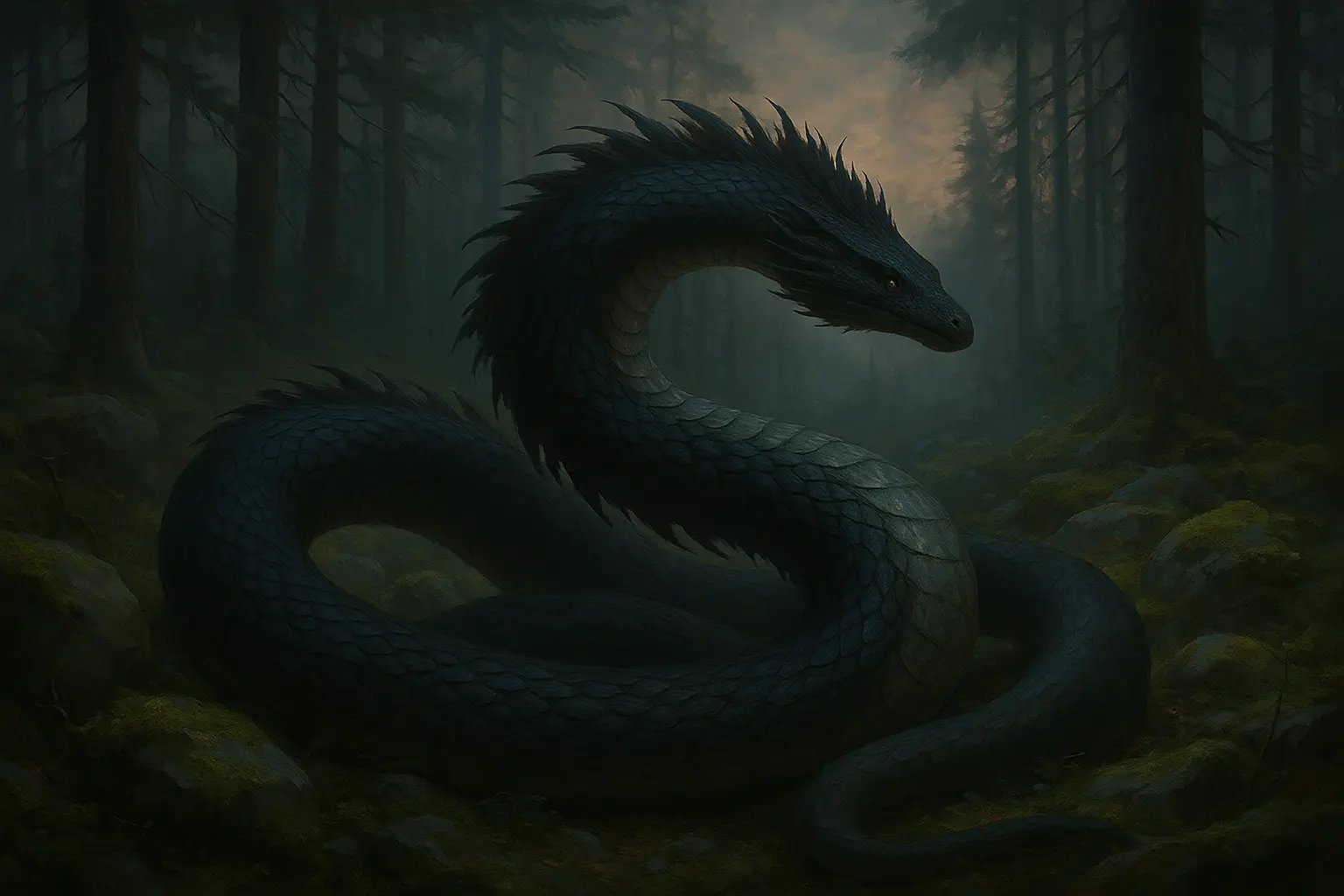What Is a Lindworm?
The lindworm—also spelled lindwyrm or lindwurm—is a mythological creature from Northern and Central European folklore. It dwells deep in forests and typically resembles a gigantic serpent monster, often compared to a dragon.
Types of Lindworms
Legend speaks of two types of lindworms:
- A good lindworm that brings good fortune, often a cursed prince transformed into a beast.
- A bad lindworm, a fearsome man-eater that attacks humans on sight.
Unique Abilities
A lindworm can swallow its own tail and transform into a rolling wheel to chase fleeing humans. This has earned it the nickname Wheel Snake.
Historical Inspiration: The Lindworm Fountain
The sixteenth-century Lindworm monument at Lindwurm Fountain in Klagenfurt, Austria, was inspired by a woolly rhinoceros skull found nearby in 1335. It represents one of the earliest recreations of an extinct animal.
Lindworms in Swedish Folklore
In Swedish tales, lindworms appear as enormous, limbless forest serpents living among rocks. They have a bright underside and dark top, with dorsal fins resembling fish or a horse’s mane—earning them the nickname Mane Snake.
Their eggs are hidden beneath the bark of Tilia cordata trees. After hatching, larvae slither off to rock piles and can grow very long when mature.
Hunting Behavior
When hunting, lindworms swallow their own tails, transforming into a wheel to roll at high speeds and catch prey. This unique ability makes them formidable forest predators.
Disclaimer:
This story is a retelling based on folklore and public domain sources. Images are for illustration only and sourced from public domain or royalty-free platforms.
